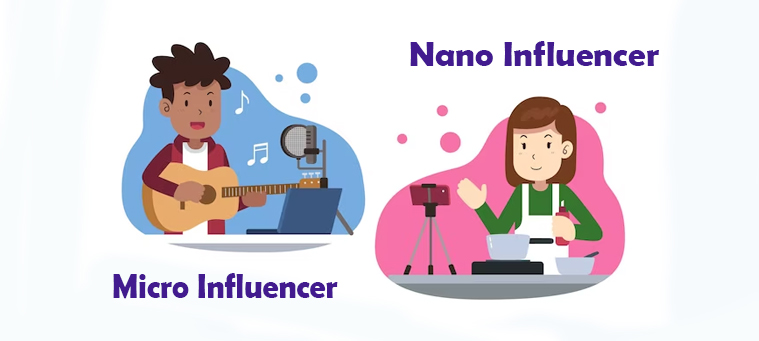Influencer marketing has exploded in popularity with good reason—it offers authentic peer advocacy at scale. Yet costs are rising fast. According to Mediakix, brands now spend $255 million+ yearly negotiating with social media influencers. Top celebrities like Cristiano Ronaldo command nearly $1 million per sponsored post. But even influencers with 100K to 500K followers charge around $5,000 to $10,000 per piece of content.
This leaves small businesses with modest budgets struggling to make influencer marketing work financially. Faced with offering thousands per post for broad reach versus meager budgets better spent elsewhere, they abandon influencer efforts altogether. But this is short-sighted because, with some creative thinking and planning, there are many cost-effective influencer marketing techniques you can use even on limited budgets.
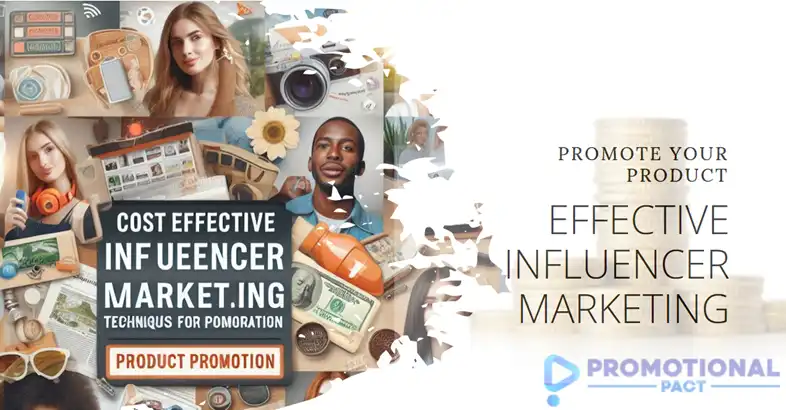
Focus on Micro-Influencers
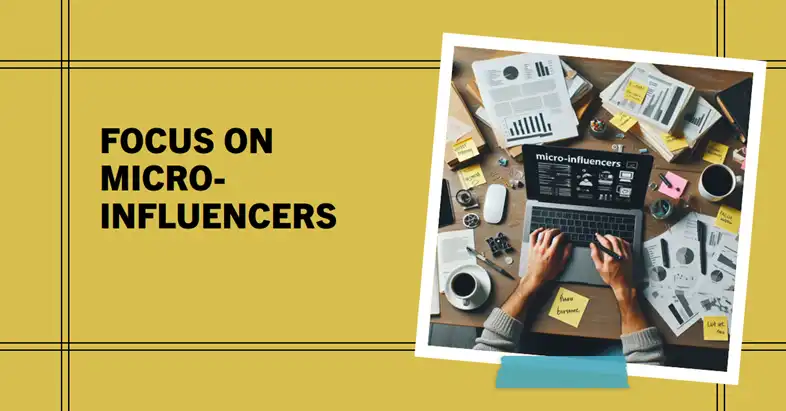
Instead of chasing elite social media stars with millions of followers and sky-high sponsorship costs, consider connecting with nano and micro-influencers. These are everyday passionate people with smaller but highly engaged niche audiences between 10K to 100K followers.
What they lack in sheer reach, they offset through relevance, authenticity, and personal connections with fans—earning higher engagement rates. In fact, influencers with over 100k followers achieve 60% higher engagement over those with larger audiences and it can drive 20% more conversions. And their reasonable rates stretch limited budgets much further.
For example, an Instagram gardening enthusiast with 10K highly engaged green thumb followers has immense value for a specialized gardening tools company. By recruiting multiple micro-influencers covering various gardening niches, the collective impact can match one broad gardening mega-influencer—but at a fraction of the price.
Typical Micro-Influencer Pricing
| Platform | Follower Range | Price per Post/Video |
| 10K – 100K Followers | $100-$5,000 | |
| YouTube | $200-$10,000 | |
| TikTok | $25-$1,250 | |
| Fewer than 15k | $250-$1,250 |
The table highlights that for the typical spend on one macro-influencer post, you can engage 5 – 10 niche micro-influencers. The collective impact can match the reach of a single broad Instagram post with over 200K followers but with a more engaged specific audience.
Cast your influencer net wider by recruiting more, lower-cost micro-influencers under your budget cap. As long as you vet niche alignment, their followers are equally or more primed for conversions over larger, loosely-relevant accounts.
Pro Tip: Utilize platforms like Buzzsumo and HypeAuditor to discover relevant micro-influencers in your niche.
Focus on Relevance over Reach
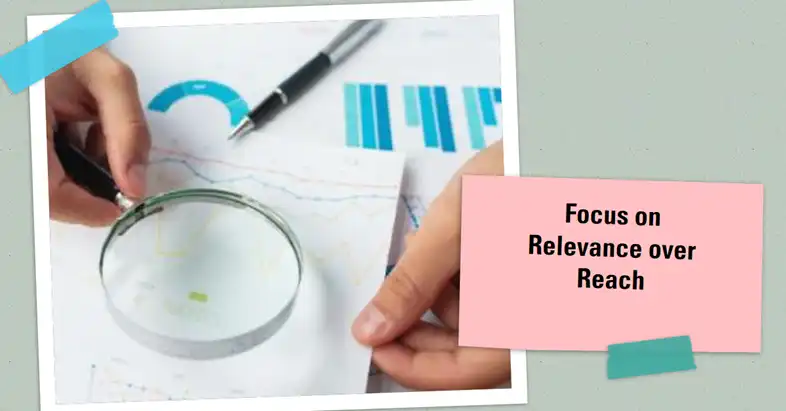
It’s tempting to equate influence only with follower counts. But relevancy matters even more than simple reach. An influencer driving 50K highly relevant niche followers tailored to your target demographic and product niche provides much higher value than a generalist influencer with 1 million mildly interested followers.
So instead of sorting by followers or engagement alone, dig deeper into metrics like
Typical Content Topics: Review past posts to ensure strong alignment with your products, brand values, etc. Similar content focus signals higher conversion potential.
Audience Demographics & Psychographics: Even at smaller reach, ensure their audience closely matches prime targets for your niche—like gender, age, income ranges, interests etc.
Existing Affiliations & Brand Partnerships: Influencers already actively creating content around rival or complementary products in your niche have a primed audience to tap for conversions and cross-selling.
Micro-influencers’ hyperfocus in specific areas makes them ideal to promote your product among the right people. And their stronger personal engagement fuels higher ROI despite relatively lower general outreach.
Utilize Affiliate & Referral Programs

Instead of a fixed upfront sponsorship fee per post, consider an affiliate partnership that pays influencers ongoing commission on sales of their content drives. With each conversion, the brand rewards influencers with commission percentages typically ranging from 5%-20% depending on product pricing and profit margins.
Benefits include –
1️⃣Risk shifts from brand to influencers: Commissions are contingent upon performance. No conversions = no payment.
2️⃣Incentivizes sustained long-term promotions: Influencers continually create content nudging buyers to your site for recurring earnings through a branded kickback code.
3️⃣Rewards bigger influencers at higher tiers: Structure commission tiers based on audience size and engagement rates for equitable payout alignment.
4️⃣Provides ongoing performance data: Track sales by influencer codes to optimize your affiliate spending.
While you pay out more post-purchase, dramatic conversion rate improvements quickly offset smaller profit margins per product.
Bonus: Both programs provide valuable performance data, allowing you to track campaign effectiveness and optimize your influencer partnerships.
Build Long-Term Relationships

Avoid treating influencers like short-term advertising partners bought by the post in mercenary transactions. Instead, cultivate real relationships by engaging them as core brand evangelists invested in your success over years, not months.
Effective Tactics Include
Giving influencers exclusive “first access” to new products for reviews or unboxing reveals posts driving valuable buzz.
🔘Provide free products for them to showcase value to content-hungry followers. But balance gifts strategically, not just one-off freebies without expectations for ROI.
🔘Set clear expectations for minimum posts featuring provided products over certain time periods.
🔘Structure tiered rewards over multiple levels and milestones to continually nudge incremental growth.
🔘Keep active 1-on-1 communication open on an ongoing basis. Check-in regularly, not just when you need something.
🔘Survey influencers directly for product development feedback from a trusted voice speaking for their niche audience segment.
This relationship marketing fuels higher engagement, ensures retained access to their audience, and incentivizes ongoing influence building value far exceeding costs over time.
Remember: Long-term partnerships help build trust, authenticity, and ultimately, greater campaign success.
Seek Out Early Adopters
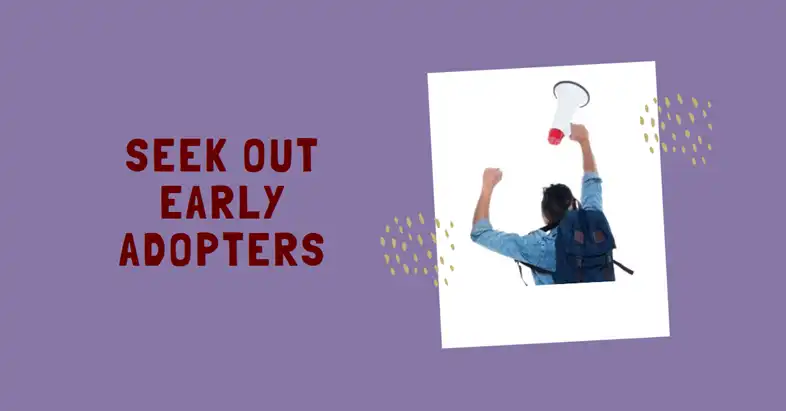
Forget trying to please everyone right away. Find the forward-thinkers who get excited to try new things first. These early adopters love being go-to gurus about what’s coming next. They learn everything about cutting-edge products early and tell people about their potential.
A small crew of techies on online forums can start the buzz for gadgets. Let them preview designs, and give discounts and affiliate promo codes. If they vibe with its promise, they’ll start chatter on their channels seen by people already interested in that niche. This organic word of mouth then attracts more niche fans over time.
No need for big mainstream influencer budgets upfront. Focus on planting seeds in targeted communities aligned to the product vision. Early adopter conversations spark faster there. Once the niche fans come, mainstream success can grow from that foundation.
Pro Tip: Look for early adopters on community forums, relevant social media groups, and even within your existing customer base.
Encourage User-Generated Content

Develop branded hashtags, content prompts, and product reviews encouraging organic contributions from both influencers and everyday brand fans. This amplifies reach by aggregating user posts into consolidated streams for higher visibility.
For example, GoPro built an iconic brand largely through influencer and user-generated “action shot” photos and videos shared under their #GoPro hashtag—reducing content production costs while showcasing authentic social proof at scale.
Other smart UGC campaign tactics include
Product Reviews
Reward high-quality reviews by reposting to brand channels or product listings for max impressions. Reviews showing real customer use cases and visuals boost conversions.
Contests
Spark excitement and participation by highlighting select photos or tying entries to prize drawings for your products. Contests surge contributor numbers to collect assets you can reuse later.
Takeovers
Invite influencers and fans to “take over” your account for guest content days tapping into their existing creative content pipelines.
For each UGC post, re-share contributions to your own much wider branded channels for bonus exposure—tapping both their and your audience’s reach. Everyone wins.
Remember: UGC builds community, trust, and authenticity, strengthening your brand image and boosting sales.
Provide Free Products

Gifting free products builds goodwill with influencers they can showcase to content-hungry followers. But ensure you frame gifts strategically, not just one-off freebies without expectations for ROI.
Instead, set clear expectations, like
- Require unpacking shots, reviews, or tutorials showing product specifics in action. Reviews and demonstrations provide helpful persuasion for buyers.
- Set minimum post requirements within timeframes, such as two posts per month over three months featuring the provided products visibly.
Base ongoing rewards on meeting key performance metrics:
- Graduated gifting tiers for additional products based on cumulative engagement or conversions driven over set periods
- Special “elite level” early access or exclusives for consistently top performers
This ties influencer value to defined marketing objectives for constant optimization. Gifting at scale raises overall production costs but dramatically multiplies distribution reach. Ensure cost per unique click or view remains efficient.
And don’t underestimate the long-term goodwill dividend beyond short-term conversions. A single influencer cultivated into a genuine brand advocate over the years provides immense indirect value.
Remember: Free products are an investment, not a giveaway. Choose wisely and track the results to ensure maximum impact.
Track and Analyze Performance

With so many moving parts across a distributed network of influencers, tracking performance is essential to focus on spending only where returns justify costs.
Assign each influencer a unique tracking link or special promo code to accurately attribute value driven specifically by them. Tracking key metrics lets you easily identify:
- Highest converting influencers overall by sales revenue
- Top influencers by volume of traffic driven
- Performance leaders by niche or product line
- Individual campaign ROI over time
Drill down to granular data like cost per click, cost per conversion and revenue driven per follower for optimum efficiency allocation.
These insights guide where to double down and which relationships need reassessment or replacing to push continual optimization over time.
Wrapping Up
At the end of the day, any brand nowadays can make influencer marketing work if you get scrappy and think niche-focused. Forget chasing internet-famous celebs out of budget. Micro-influencers with loyal engaged small followings drive better conversions matched to your products. Vet content and audience fit over big theoretical reach numbers. Structure smart incentives promoting long-term partnerships over one-off transactions. Spot rising standouts early and they’ll grow with you. User-generated and repurposed evergreen content maximizes returns from what you produce. The key is nurturing influencer relationships strategically over time, not just mercenary spending when wallets allow.
